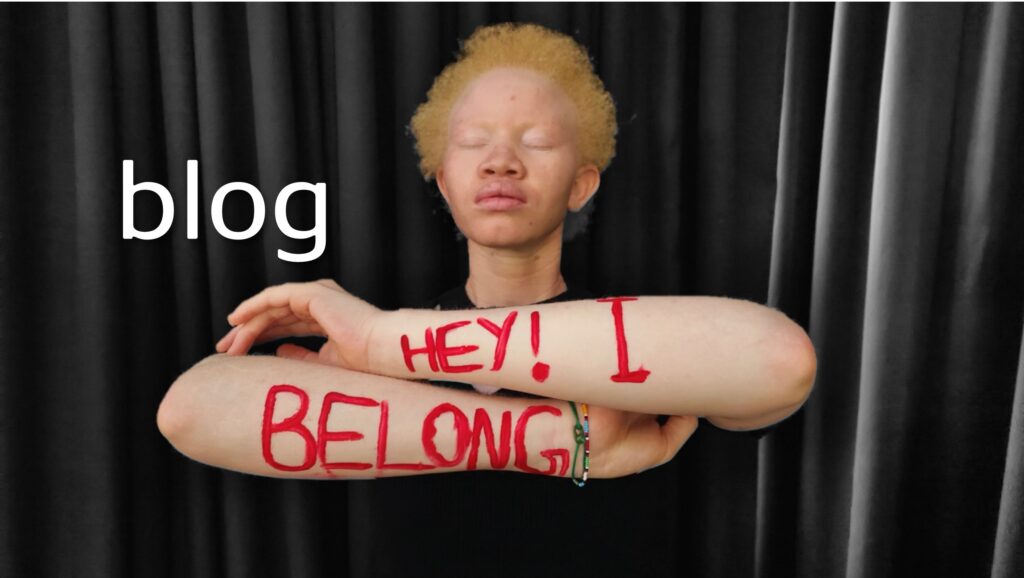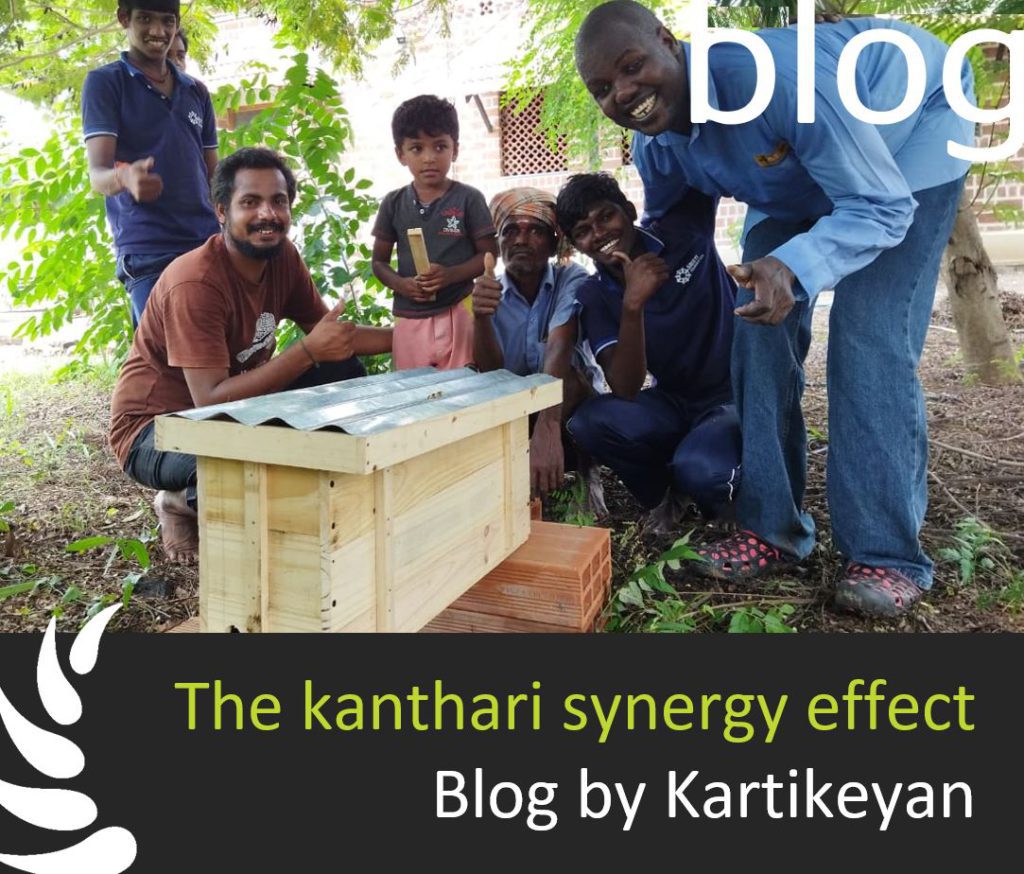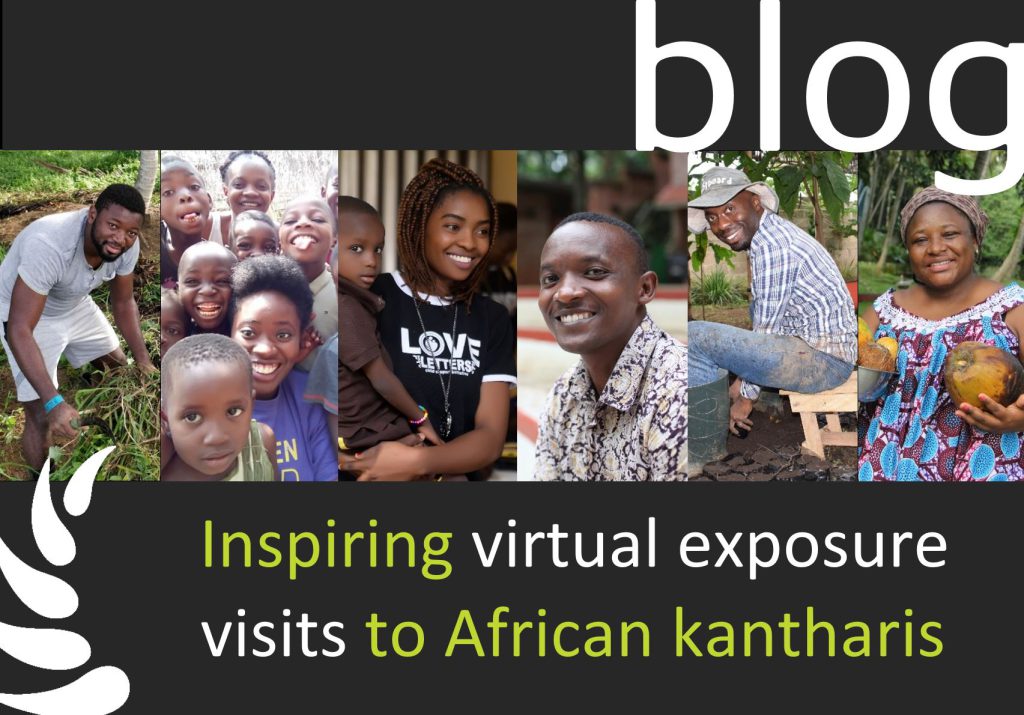Embracing albinism-A painful discovery: Sherleen’s 25-year journey of Denial to Embracing
Embracing albinism-It took Sherleen Tunai 25 years to accept that she has albinism. Sherleen grew up in Kakamega, Kenya. She yearned to belong, and she hated how she looked. As a child, she started designing clothes for herself because she wanted to look as good as her dolls. Having albinism is not a limitation. Sherleen wants to empower other persons with albinism to come to the point of acceptance and self-confidence through her initiative Ana Antami (I belong).
Loneliness and rejection: Sherleen’s childhood struggles with identity
“Sherleen, you have albinism.” It took me 25 years to say these words to myself. This was right after a call with Ducton, my elder brother. He reminded me of the past that I had subconsciously blocked from my memory. As a child, I was lonely. Children would run behind me shouting all sorts of names including mzungu (white girl), muindi (Indian), or jini (ghost).
The one statement that always made me cry was “Kujeni muone! Hii ni ninil? Hii si mtu.” (Come and see, what this is. This thing is not a human!) I hated walking home from school and to defend myself, I always carried a long stick. Oh, I was so ready to hit anyone who ran behind me calling me names.
But it earned me a reputation for being something like an aggressive animal. For a long time, I didn’t have friends because children excluded me from their play dates, and I was scared to be rejected. Even my siblings were embarrassed to be seen with me. They made excuses, saying that I was too young to go out, yet they seemed to have no problem taking our last born with them.
I remember one of the Christmas celebrations when I had wounds all over my face, my scalp, my hands, and my legs, from serious sunburn. They stunk, and flies were all over me. I would go to the chicken pen and stay while others were celebrating. I knew no one wanted me around because I smelled.
Sherleen’s early beliefs about albinism
Once, at the age of 8, I had enough and I asked my dad, why I was different. He said: “Oh, I purchased you in London. The pilot dropped you at the market and I picked you there. That’s why you are my white girl,” For years I had believed this story. Life was lonely until my father started buying me Barbie dolls. Just imagine the excitement I had, seeing a doll that looked almost like me, same skin and hair colour.
Unfortunately, they all came in the same boring dresses. So, I designed and hand-stitched clothes for them. Later I thought, why not make clothes for myself? Since I only had second-hand dresses from my older siblings, I cut them apart and sewed them back together again in a different, more interesting way.

From barbie dolls to fashion design: Sherleen’s creative escape
It was in 2010 when the horrific news about attacks, kidnapping, and killings of people with albinism for their body parts came out! Many were sold to Tanzania, and our organs, hair, nails, and limbs were worth a fortune. At that time, my dad restricted me to only staying at school or home.
After primary school, my sister suggested a school for the blind where I could be with “my kind.” There, for the first time, I saw another albino. I kept staring at her. She looked exactly like me. When I saw a boy with albinism, I was in love. High school was easy because I fit in. No one called me names or cut my arm to see whether my blood was green like a monster.
Yet, I was shocked to see albinos in my school with wounds on their skin. One girl had skin cancer; she was always in pain. She left school and never came back. University life was tough. I tried campus politics, but I was cyber-bullied. I was called a skinned pig. I gave up because I couldn’t cope with all the hostility. So, my friends and I designed T-shirts to raise awareness about albinism. My sister suggested that I try modelling, but designers treated me as if albinism was contagious. So, I went back to my favourite activity, designing my clothes.
I observed that other albinos tend to grow up in isolation and live with fear of rejection. And therefore, they don’t try out new ideas due to fear of failing. Most of us refuse to accept that we have albinism. Although I was one of them, preaching acceptance and inclusivity, I never considered myself to be an albino. And now I realize, that without acceptance, we remain living in denial forever.
Fear and isolation: challenges faced by albinos in education
I channeled my creativity into fashion despite receiving a lot of resistance from the fashion world. Why struggle to fit in when I can stand out, and stand strong? Different is beautiful. So, I started experimenting with different ideas and designs. Even with this, I still lacked acceptance.
Breaking fashion barriers: Sherleen’s empowering journey at kanthari
Coming to kanthari has made me see albinism in a new light. It is just a lack of melanin. We can do and achieve anything we set our minds on. I understood that I could question norms and beauty standards. Unlike before when I was so eager to fit in, I now accept and embrace and am even proud of the way I am. From these learning’s, we will now start to act: We will train interested persons with albinism in creative fashion design with the following goals:
- Earning skills in designing and marketing.
- Daring to dress in a striking, fancy, and unconventional way.
- Accepting and gaining confidence about one’s own appearance.
- Integrating proactively in society.
At Ana Antami, we believe that awareness is a continuous process. Our actions and impact are a form of awareness. The world we want to see is a world where albinos live freely, where albinism means nothing else but a lack of melanin, where we can dare to weave and wear unconventionally.



